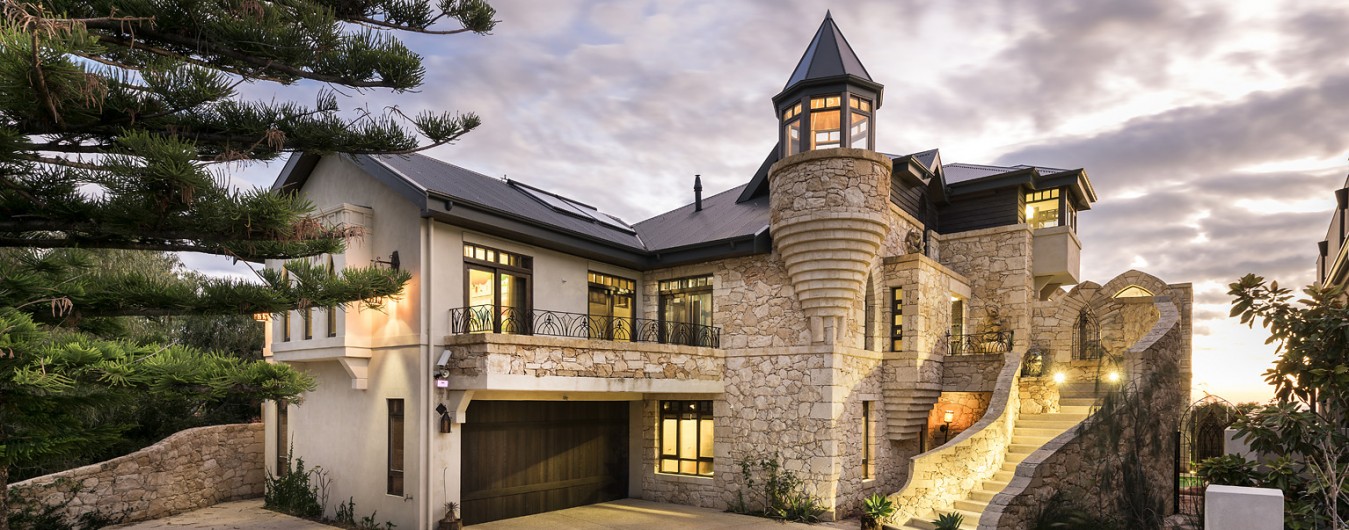Designs of passive solar homes, incorporating advances in recycling building materials from demolition, water and waste water design should be the focus of progress in our search for answers to reduce our domestic energy consumption. New advances in solar water heating, grid connected photovoltaic systems and the integration of other renewable energy systems should be incorporated into the built environment.
Passive Solar Homes to Create Opportunities

Passive Solar Homes with Solar Umbrella
Passive solar homes, adapted to become energy and water efficient such as this house shown with a solar umbrella, could create 300,000 new jobs in the building industry – this growth would take place over 20 years and be in key industry areas.
The growth in new jobs will only take place if we are serious about reducing greenhouse gas emissions and introducing policies and practices to ensure we only construct and reconstruct energy and water efficient homes.
Australia’s built environment constitutes 33 per cent of greenhouse gas emissions and this figure increases to 40 per cent when infrastructure and embodied energy are taken into account.
These amounts could be reduced if energy consumed in existing homes is reduced by between 30 and 50 per cent and by 80 per cent in all new homes. This is why passive solar homes are the only realistic solution to our residential built environment energy problems. However not all designers and architects specialise in energy efficient design and a ‘near enough is good enough’ attitude will not bring the best results in reducing energy consumption. Contact passive solar homes specialists for the best advice and outcome and ask them for proof of their expertise before you enter any contracts.
Retro-Fitting Existing Homes
Of the 7.5 million houses in Australia we know most need to be retrofitted to become more energy and water efficient. Many of these will eventually need to be replaced with new state-of-the-art passive solar homes because it will be too costly to retrofit them.
Homes to be demolished will have to be carefully recycled and this will entail the introduction of procedures and policies to ensure wastage is kept to a minimum.
Building Codes Needed For Recycling Existing Homes
National building codes and other relevant legislation in Australia do not require home owners and builders to comply with energy and water efficiency principles when demolishing, retrofitting or renovating homes.
Legislation is lagging and up until now lay people and industry groups have led the way in the instigation of innovative and necessary change.
The idea of adapting a home to become more energy and water efficient is normally decided by home owners, who place pressure on designers and builders to trial new methods.
Once these techniques have been found to be effective, builders adopt them into mainstream practice and political parties follow by introducing them into legislation.
This means the general public and industry professionals will continue to lead the way in the push for important change, but this may not be enough if we are to significantly reduce greenhouse gas emissions to mitigate the impact of climate change.
Demand For Passive Solar Homes
Many people in Australia want to live in passive solar homes and work in buildings that have been designed and built to comply with energy efficient and climate sensible principles.
While it’s good news people that people want to live in energy efficient homes, there are barriers to these lifestyle changes which include money, industry know-how and legislative amendments. This is because the cost to retrofit a property may initially be outside a home owner’s budget despite the investment eventually being offset in energy savings while also reducing each of the occupants’ carbon footprints.
Legislation Lags Consumer Demands
Industry know-how and current legislation are also not at the level desired by consumers. In the interim, young people, tradespeople, homes designers and architects could extend their skills’ levels by enrolling in sustainability courses and placing pressure on landlords and employers to implement climate sensible and energy efficient principles in the rental market and the workplace.
However retrofitting and building new passive solar homes by home owners is probably the most likely and definitely the most effective response to our domestic over-consumption of energy.
Image: Courtesy Wikipedia











